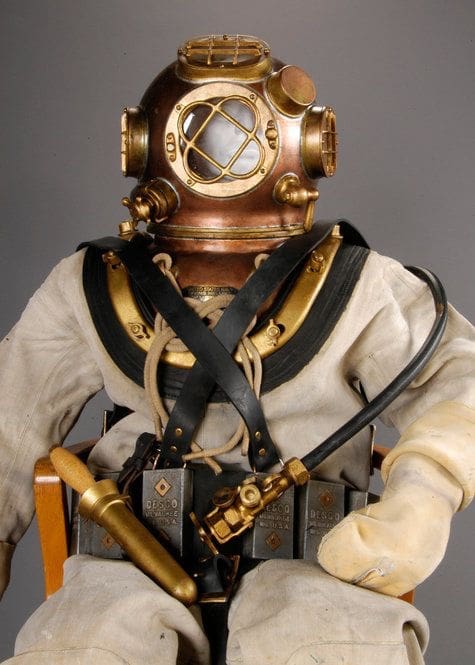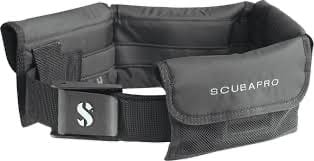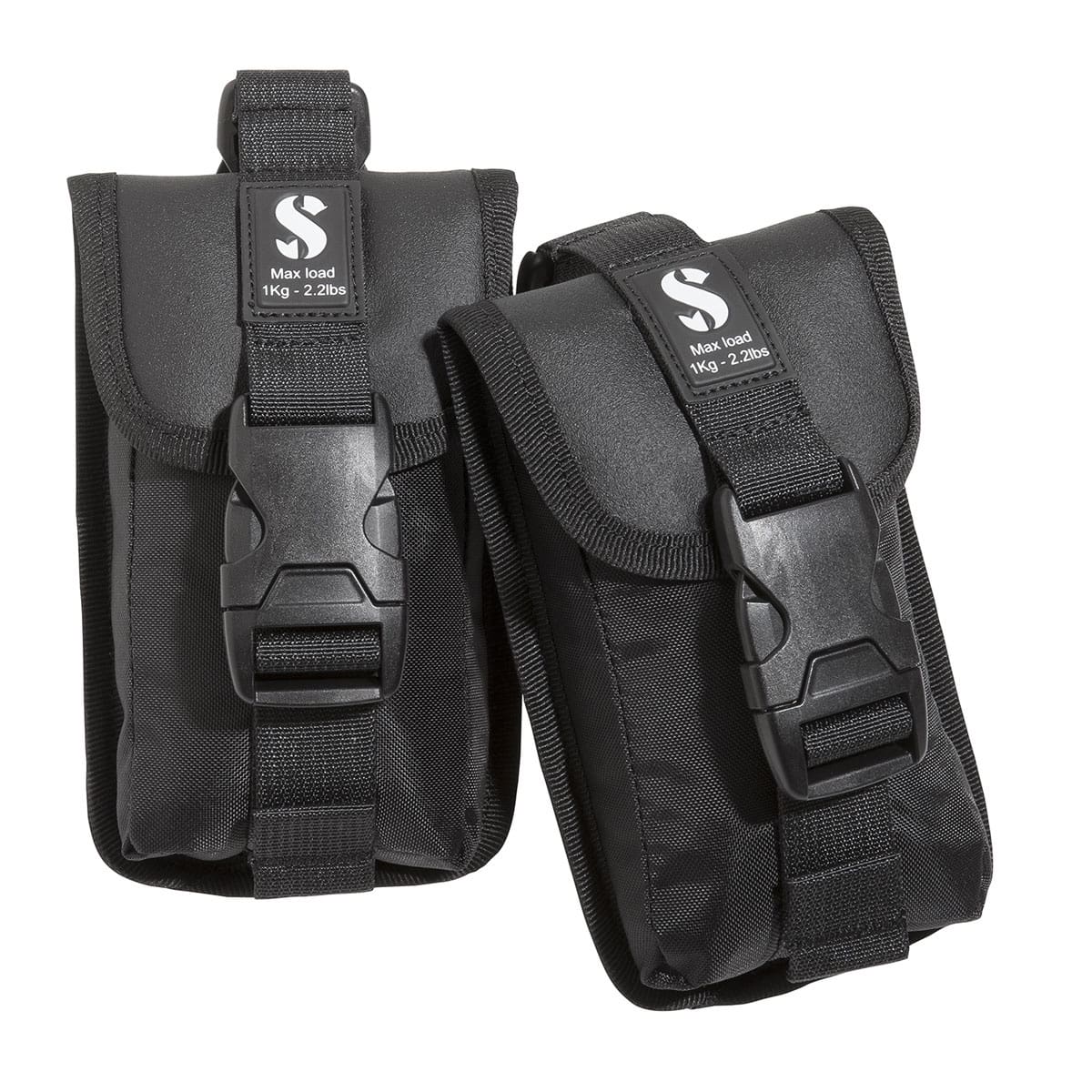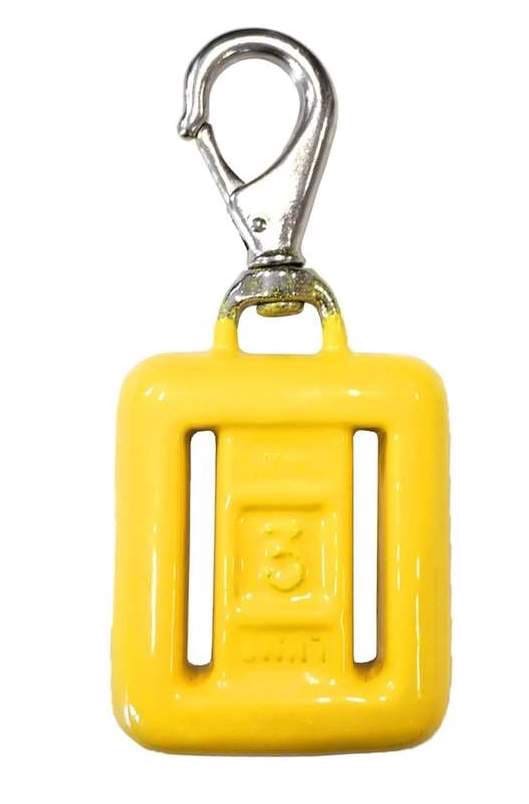An essential part of preparing for each dive is calculating the amount of weight you’ll need to ascend and descend safely and effectively. By gearing up in the correct amount of weight, you can successfully maintain neutral buoyancy throughout the dive.
Many factors can affect your buoyancy—your body composition, the equipment and clothing worn, the amount of air you’re breathing, and the water you’ll be swimming in (freshwater/saltwater). Being able to add weights to your dive belt or in the pockets of your BCD can help you minimize drag and make your finning more efficient.

Proper weighting and buoyancy control are crucial if you want to have a successive dive. Unfortunately,there is no extract formula to help say how much weight you should wear on any giving dive. The reason for this is no one is exactly alike. So, all you can really rely on is knowledge and practice, I will say this a couple times a good log will help more then you will know. This goes for anything you do. Always keep a logbook, for land warfare, over the beach, and as much as you can. This will help when it has been a couple of months in between doing things. To help make it easier, below are a few easy steps you can take, preferably with the assistance of a dive weight calculator. Find a formula that works for you and stick to that, but make sure you test yourself before each dive. Also keep a dive log of all your dives. (See told you I would say this a lot) Write down what you wore, what way was the current going to you have to kick harder, were you carrying anything extra like a ladder or breaching tools, and how you felt. Make sure you have water temp, wetsuit thickness, and other information like that. This will go a long way to helping with future dives.

Weigh Yourself and your Gear
A rough approximation of the weight you’ll need can be figured out quickly by weighing yourself and then using those numbers to figure out the amount of weight you’ll need on you.
In freshwater, most divers need 6 to 8 percent of their body weight in added weight, but in saltwater (which is denser and will add buoyancy), this figure is closer to 8 to 10 percent. This number is a good starting point to calculate your weight amount further.
Part of determining your body weight is weighing your buoyancy compensator (BCD), dive jacket/ Rebreather. It is a significant source of buoyancy as most of them, especially older models, have a lot of padding that will make you float.
To determine the buoyancy of your gear, immerse it in water and release any air that might be trapped inside. Move it around underwater when you float test it, same as when you get into the water make sure you get all the air out so there are no bubbles, halfway thru your dive.

Test Your Weight
Go through a trial run in a swimming pool and wear all of your dive gear. If you can’t wear your full equipment, make sure to put on the closest approximation to what you’ll be wearing for the specific dive. Remember that if your dive is going to be in saltwater, you’ll need a bit more weight compared to a freshwater swimming pool.
Here it is broken down.
1. Before the dive, float motionless in deep water.
2. Deflate all the air out of your BCD/ Rebreather.
3. Take a normal breath and hold it.
4. If you start sinking – you need less weight. If you find yourself bobbing out of the water – you need more weight.
5. Repeat the process until you are floating as close as possible to eye level.
6. If you are floating at eye level with all you gear on, that is what you want. Have weights by the side of the pool so you can add or subtract weight as you check yourself out. They make weights with snap links or have weights with some 550. Have a carabiner so you can hang them on your weight belt or if you have a weight belt with pockets, you can add or subtract weights as you need. Lastly, a good logbook can go a long way to help with what you will need.

Use a Dive Weight Calculator
While manually figuring out the right amount of dive weights to gear up in works for many divers, others find it easier to use an actual calculator. Try using a SCUBA diving weight calculator. You’ll be able to find tons of calculator websites online. Enter the figures for the required fields and check if the suggested amount of weight works for you.
www.divestock.com/calc/weight/weight
Take 10% of your body weight in lead
A common rule of thumb, adhered by many divers, claims that a diver must carry weights equivalent to 10% of his body weight. While that does give you a specific range of the number of weights you need, it does not take many relevant factors into account.
Factors such as muscle, fat, height, gear, and exposure suit are crucial when choosing weights and should be taken into account. For example, muscles sink and fat floats. A muscular man weighing 180lbs would probably need much less than 18 pounds of weight (even with a long 5mm), whereas a short stalky fellow weighing 180lbs might actually need more than 18lbs. This rule has led to many overweighted divers.
Don’t be overweight!
Many newer divers, and even some of the more experienced ones, dive with too much weight, either consciously or without knowing. Being overweight can lead to some bad situations. Sinking too fast is a common cause for ear problems. Now if you are overweight, you will add air to your BCD, now when you head to the surface to take a peek you will be pushed up faster than you want to go. You will also feel like you have to swim fast all the time, to stop yourself from sinking, and you will breath more air then your swim buddy.
Too much weight will also affect your body position, sinking your lower body and causing you to swim up. Even if you do manage to balance yourself properly, you will have much more drag through the water. Swimming downward for half of the dive does not look cool and looking cool is half (or more) the job.

